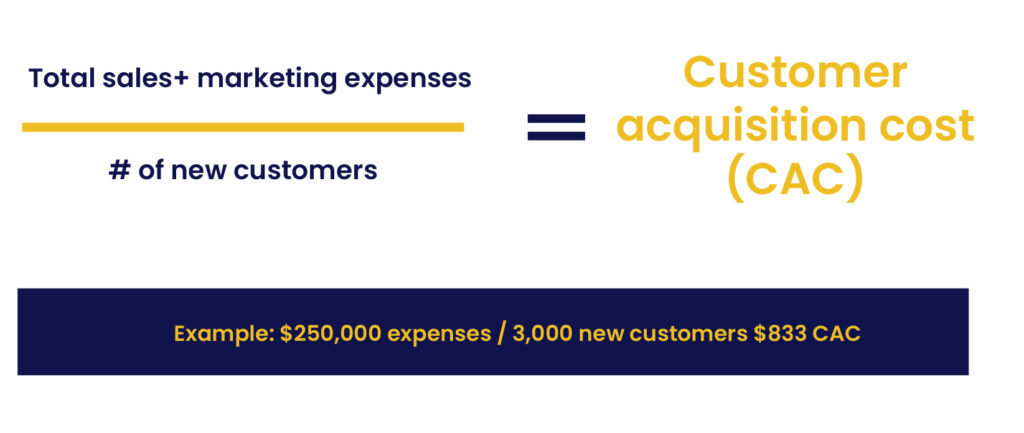ARTICLE
How To Calculate Cost of Acquisition for a SaaS Business

Someone may ask why understanding the Cost of Acquisition, also known as CAC, is an important metric. In fact, understanding this metric can make or break the success of a company. Calculating the Cost of Acquisition is the strategy that helps businesses like yours make informed decisions about their marketing and sales efforts. So this metric is not just a number on a spreadsheet; it’s a strategic tool that helps businesses like yours make informed decisions about their marketing and sales efforts. In this guide, we’ll have a look at what CAC is. Also, we will understand why it matters and how you can calculate it.
Understanding the Cost of Acquisition (CAC)
What is CAC?
As everyone might know, Customer Acquisition Cost (CAC) is the total cost linked to acquiring a new customer. This metric has all the expenses incurred in convincing a prospect to become a paying customer. As we have already mentioned, understanding CAC is crucial. This is because it provides insights into the efficiency and/or the sustainability of your customer acquisition efforts.
Why Does CAC Matter?
Financial Health: The first thing that makes CAC important is the fact that it impacts your bottom line. This is because a high CAC can erode your profit margins, which makes it essential to optimize your acquisition channels for efficiency.
Marketing ROI: CAC is also a crucial factor in determining the Return on Investment or what is also known as ROI, for your marketing campaigns. So CAC as a metric helps you assess which channels are delivering the most value for your investment.
Business Scalability: If you own a business, understanding CAC can help you make informed decisions about scaling your operations. If you’re wondering why, that’s because it provides a foundation for strategic planning and growth.
Calculating CAC: A Step-by-Step Guide
Step 1: Define Your Time Period
The first step you need to consider is to determine the time frame for which you want to calculate CAC. The time frame you choose could be monthly, quarterly, or annually. No matter what time frame you define, you need to know that consistency is key for right and accurate comparisons.
Step 2: Add Up Marketing and Sales Expenses
Now, let’s move to step two, which is all about compiling the expenses related to marketing and sales activities during the time period you determined in the first step. These expenses may include but are not limited to advertising costs, salaries, software subscriptions, and any other expenses you have and may directly be tied to customer acquisition.
Step 3: Calculate the Number of New Customers Acquired
When it comes to step 3, you need here to determine the number of new customers acquired during the chosen time frame.
Step 4: Crunch the Numbers
Now you need to divide the total marketing and sales expenses by the number of new customers acquired. The formula is very simple:

The result is your Customer Acquisition Cost!
Churn Solution: Enhance Your Customer Acquisition Strategy
As you explore the complexity and opportunities that CAC can provide you with, optimizing your customer acquisition strategy becomes very important. This is where Churn Solution steps in as a customer acquisition platform. Churn Solution as a platform supports your business and helps you understand and manage customer churn in the best way, but not only that, our platform also plays a very important role in refining your acquisition efforts.
How Churn Solution Enhances Your Strategy:
Insights Based on Data: When you use Churn Solution, you get data based on customer behavior, this will absolutely help you identify areas where improvements is needed in your acquisition strategy.
Retention Optimization: Churn Solution also allows businesses like yours to know the reasons behind churn, this is particularly important to optimize their customer retention efforts and customize their cancellation flows, which will ultimately ensure a more efficient use of acquisition resources.
Holistic Approach: The great thing about Churn Solution is that it takes a holistic approach in a way that connects the dots between customer acquisition, retention, and overall business growth. This will help transform customer insights into actionable strategies for sustainable success.
Conclusion: A Strategic Imperative
We get that growing customer acquisition is important and yet hard. That’s why understanding and optimizing the Cost of Acquisition is a best practice and a strategic imperative. As you explore this, consider Churn Solution as your partner in navigating the complex interplay between acquisition, retention, and business growth. You can easily transform your customer acquisition strategy into a well calibrated machine and ensure that every investment yields maximum returns and every customer becomes a valued asset on your journey to success!
















